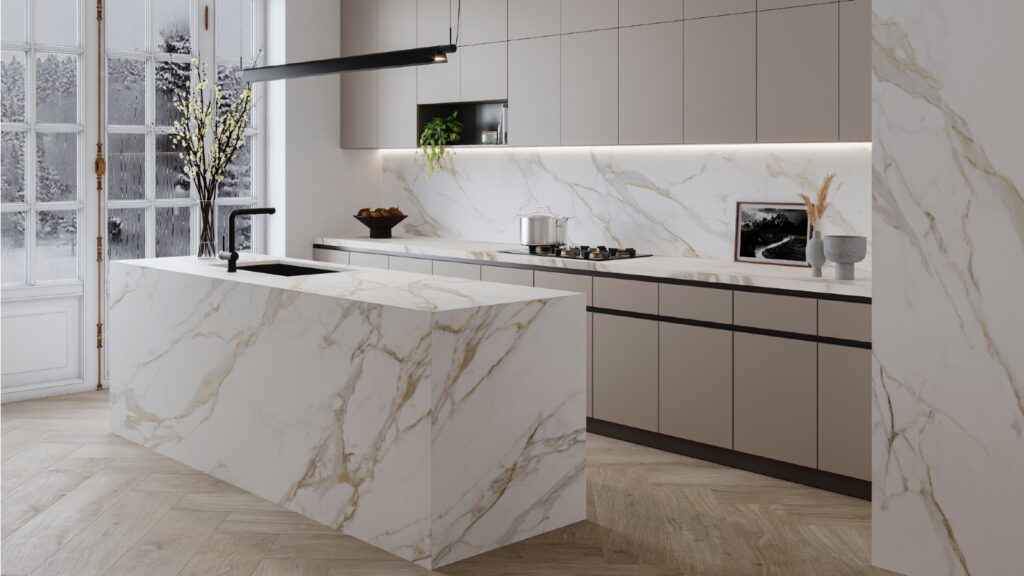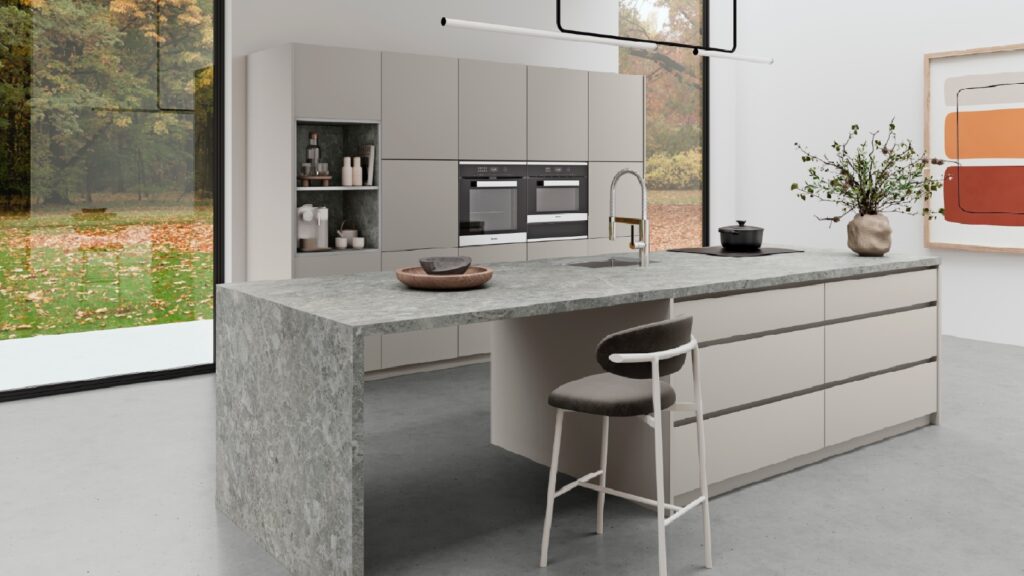Kitchen task and mood lighting should be a given, but some designers are skipping the basics
We all know the importance of good lighting in a kitchen; the space needs to be lit to fulfil the safety requirements of a working area but illumination must also create an ambiance in the living space. Yet industry experts state kitchen designers and specifiers are still struggling to select appropriate illumination. Either that, or they are ignoring the requirements for lighting altogether. Dave Humphries of In-toto Leamington Spa and In-toto Leicester states: “I still see kitchen designs that neglect to place and lighting in key working areas, especially sink area – there is nothing worse than trying to work in your own shadow.” While director of lighting supplier Fritz Fryer, Simon Wallis-Smith points exclaims: “We often receive architectural drawing and kitchen designs where the designer has proposed/specified a very basic scheme with no reference to products or controls. It’s not an easy thing to retrospectively correct once second fix is complete.”
Task to ambience
So, we make no apologies for reminding kitchen designers to pay attention to lighting, from task through to ambient illumination. Both of these types of lighting are of equal significance in a project, for practicality of use, creating a welcoming environment, and even making a striking design statement. Using a mix of lighting helps achieves layers of illumination and provides the flexibility of illumination that multi-purposes living spaces, such as kitchens, now require.
Sponsored Video
For task lighting, think of the practicalities of areas which will require focused light – such as over the hob, sink, worktop run or island. While many designer may simply opt for downlights, senior designer at PWS Graeme Smith points out: “Underwall cabinet lighting is a quick and easy way to improve task lighting and if you opt for a dimmable system then this will double up as mood lighting to create an atmosphere.” He continues, explaining: “Plinth lighting is great for creating mood but also can be a practical way to illuminate the walkways. Pendant lighting works well over a breakfast bar, or island, as a way to define an area and also add much-needed illumination at the right height and in a focused area.”
LEDs are go-to
Whatever fittings designers and specifiers choose the light the kitchen, there’s one surety that LED is the go-to lamp. Not only are LEDs an energy-efficient replacement to a filament bulb or halogen spot, they allow designers more creativity with their schemes from underplinth and under wall cabinet, through to in-drawer lighting or even through shelf lighting (See John Craig of Leyton Lighting Expert View). And they can offer even more brightness than ever, with the development of COB (chip on board) models. Sales director of Sycamore Lighting, Gary Wilson explains: “This is a single point, high output LED that offers superb colour rendition and efficiencies not seen in such lights before.”
And LEDs are easier than ever to install, as head of product management at Hafele, Kerry Baulch adds: “A simple, modular plug and play system makes it easier than ever to integrate LED lighting into your kitchen and dining area. This system allows you to customise the switches, so that it fits your individual needs and can be easily adapted to the ever-changing design trends.”
All white now
And there is even choice in the colour rendition of LED lighting, further widening the appeal. We’re not just referring to the disco-style, colour changing lamps but a choice of white illumination. The importance of offering a choice of Cool, Warm and Natural White, is dependent on whether a designer is creating a contemporary or classical kitchen or wants to replicate daylight, respectively. Dave Humphries at In-toto comments: “For us, here at In-toto natural white downlights with wider 60° beam angles are very popular for giving excellent task lighting and mirroring natural daylight.”
However, for designers, who want to echo the bright light associated with the morning with Cool White LEDs, through to warmer evening wash of light using Warm White, there are now single fittings that can provide this choice. Gordon Boyd, area sales manager northern region of Nolte, explains: “Nolte’s new Emotion Light 12 V system combining both the cool white and softer warm light in the same light fitting allows you to alter the mood within your kitchen in and instant and will be this year’s must-have. With this full integrated LED system, lighting can be interchanged between task and mood, as well as being dimmable and all controlled by one simple, remote control.”
Control by tablet
It neatly brings us onto the control of lighting, and here is where technology is set to take even greater hold, from sensor operation though to smart phone and tablet Apps acting as remotes, even to Smart House automation.
Sensor lighting can be used to great effect inside of drawers or cupboards, as not only is it energy efficient – used only when needed – but it provide illumination in areas which otherwise may remain in shadow. Its particularly useful to create a kitchen which is transgenerational, spanning a wide variety of needs including older people whose sight may be limited.
But in a move towards more greater automation, industry experts believe Apps will be the natural progression. Matt Philipps, head of Rotpunkt UK sales, agrees: “Rotpunkt has introduced remote, which is also a great aid to lighting demonstration in the showroom, and we are developing an app. It is because the kitchen is now a social space that consumers look for added value features that will impress friends and geusts, which also means increased order values for retailers.”
While Smart House controls may be growing in the new build, it is some time off from the general high street sale. However Gary Wilson of Sycamore Lighting points out: “We have seen a sharp increase in the number of requests for whole house lighting solutions, which allow the installer/user to create scenes not only within the kitchen, but also throughout the house and garden, at the touch of a button.”
And watch this space, as technology grows apace. CEO of John Cullen Lighting, Peter van der Kolk looks ahead: “In five years’ time, intuitive smart control systems will know who is in a room, by recognising their smart phone, for example, and automatically adapt the room’s lighting. The system will already have learnt what that person’s preferences are for that time of day.”
Certainly there seems to be ever increasing technologies to incorporate into kitchen design and excite the customer. But industry experts will agree – it’s important don’t forget the basics!
This article first appeared February 2015 issue of Kitchens & Bathrooms News



